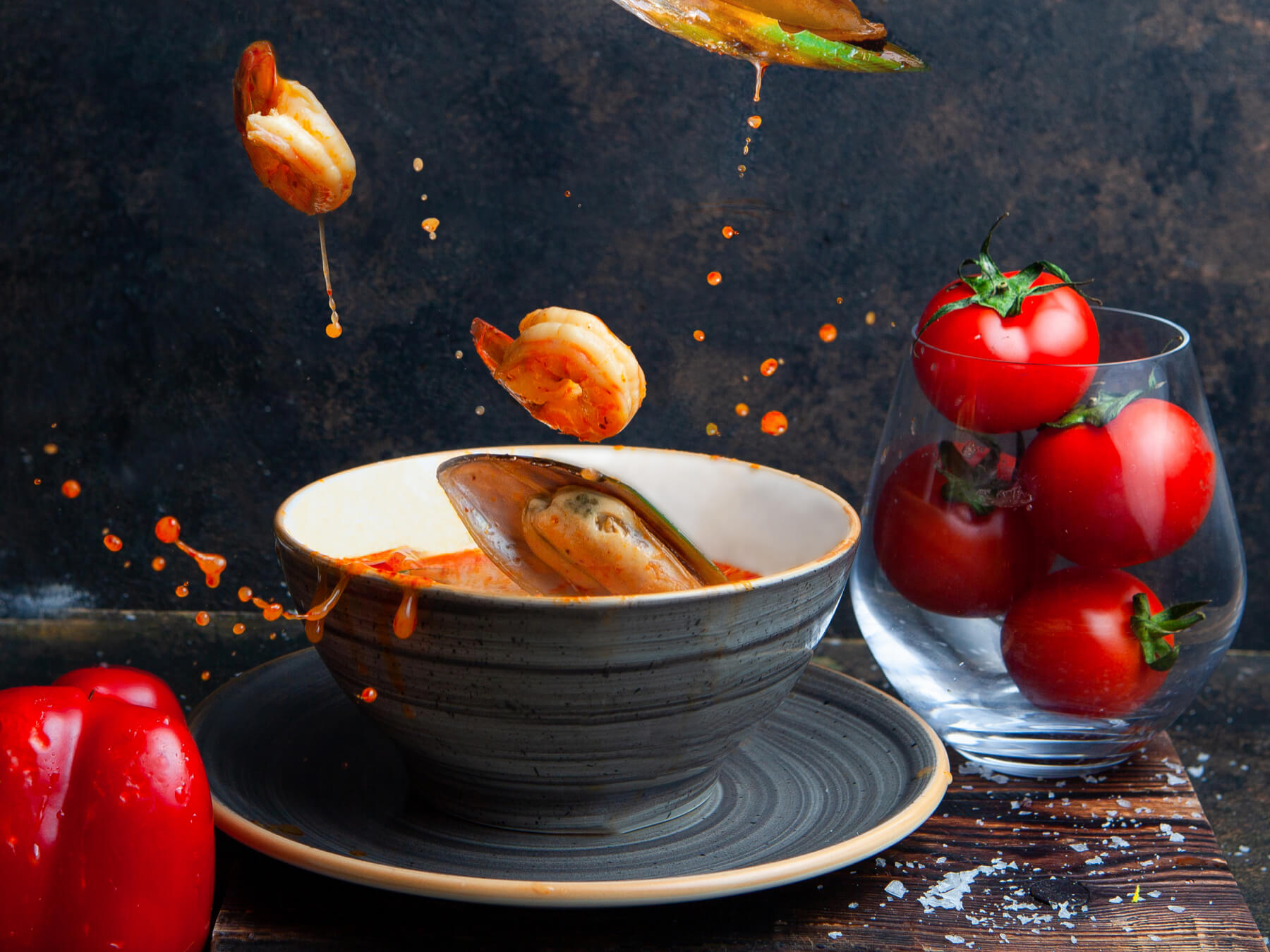© 2020-2025 Muza, All Rights Reserved
Tips for Beautiful Compositions
05 July 2024

Creating an airy vegetable photo composition can be an enjoyable and artistic endeavor that allows you to transform simple culinary ingredients into a visually appealing masterpiece. This guide will take you through the steps of creating a beautiful and vibrant photo composition using everyday vegetables. The goal is to highlight the natural beauty and textures of the ingredients while arranging them in a way that is both aesthetically pleasing and appetizing.
Materials Needed
- Frying Pan: Choose a medium-sized frying pan with a non-stick surface. A pan with a dark interior can create a nice contrast with the colorful vegetables.
- Solid-Colored Surface: Select a surface that will serve as the background for your composition. A plain white or light-colored tablecloth, cutting board, or piece of poster board works well.
- Ingredients:
- Sliced and whole onions (red, white, or yellow)
- Peppercorns (black, white, or mixed colors)
- Sliced mushrooms (such as button, cremini, or portobello)
- Fresh parsley sprigs
- Camera: A DSLR or smartphone with a good camera will be sufficient. Ensure the lens is clean for the clearest shots.
Steps to Create the Composition
Step 1: Prepare Your Ingredients
Begin by washing all your vegetables thoroughly. Slice the onions into rings or half-moons, depending on your preference. Clean the mushrooms and slice them evenly. Pick fresh parsley sprigs, ensuring they are vibrant and green.
Step 2: Set Up Your Background
Place the solid-colored surface on a flat table or countertop. Make sure the surface is clean and free of any distractions. The simplicity of the background will help the colors and shapes of the vegetables stand out more prominently.
Step 3: Arrange the Frying Pan
Position the frying pan in the center of the solid-colored surface. The pan will act as the focal point of your composition. Ensure the handle of the pan is aligned to create balance in the photo. For a dynamic effect, you can angle the pan slightly.
Step 4: Create the Vegetable Composition
Now it's time to arrange your ingredients above the frying pan. The goal is to create a rectangular shape with the vegetables, making sure they look natural and aesthetically pleasing. Here’s how you can do it:
- Onions: Place a few whole onions at the corners of your rectangle. Scatter the sliced onions around them, creating a pattern that leads the eye across the composition.
- Peppercorns: Sprinkle peppercorns in small clusters throughout the arrangement. Their small size and dark color will add texture and contrast.
- Mushrooms: Arrange the sliced mushrooms evenly across the rectangle. Let some of the slices overlap slightly to add depth and dimension.
- Parsley: Tuck the fresh parsley sprigs in between the other ingredients. The green color will add a fresh and vibrant touch to the composition.
Step 5: Final Adjustments
Once all your ingredients are arranged, step back and view the composition as a whole. Make any necessary adjustments to ensure balance and harmony in the arrangement. Check that the shapes and colors are distributed evenly and that there is a sense of flow and movement in the composition.
Step 6: Lighting
Proper lighting is crucial for capturing the best photo. Natural light is ideal, so set up near a window if possible. Avoid direct sunlight, which can create harsh shadows. If using artificial light, opt for a soft, diffused light source. You can use a white sheet or diffuser to soften the light.
Step 7: Take the Photo
Position your camera directly above the composition, ensuring it is centered and level. Adjust the height of your camera to capture the entire composition within the frame. Take a few test shots to check the exposure and focus.
- Adjust Settings: If using a DSLR, set your camera to a small aperture (high f-stop number) to ensure a deep depth of field, keeping all the elements in focus. On a smartphone, use the focus lock feature to maintain clarity.
- Take Multiple Shots: Capture several shots from slightly different angles and distances. Experiment with both close-up and wide shots to find the most appealing composition.
Step 8: Post-Processing
After you have taken your photos, use a photo editing software to enhance the image. Adjust the brightness, contrast, and saturation to make the colors pop. Crop the image to remove any unwanted edges and focus on the main composition.